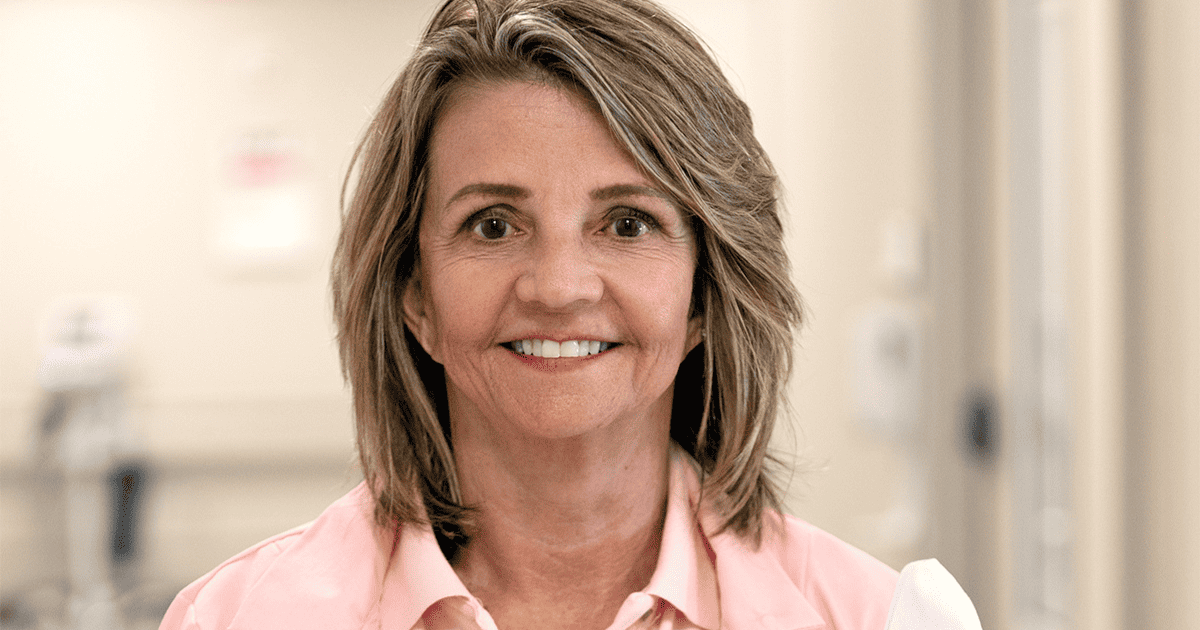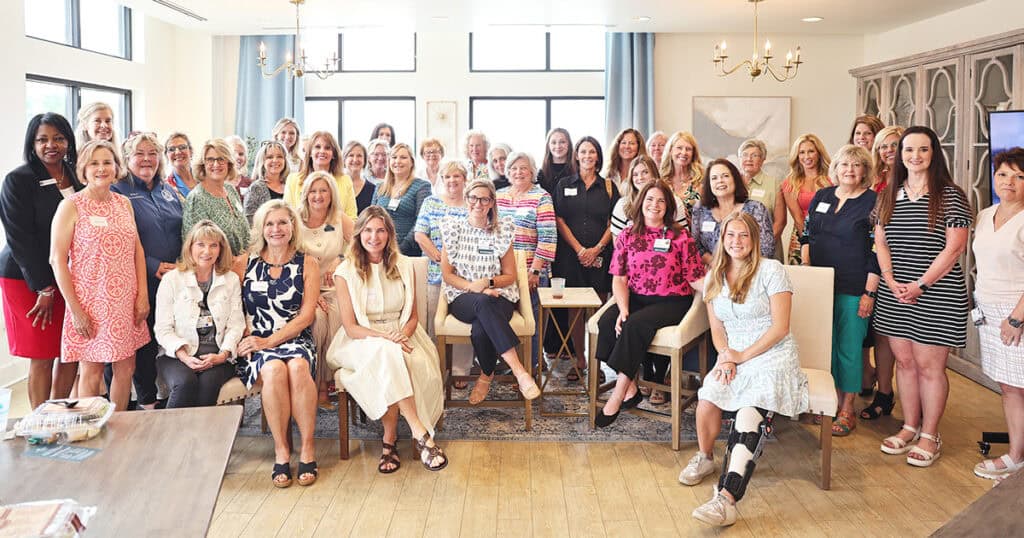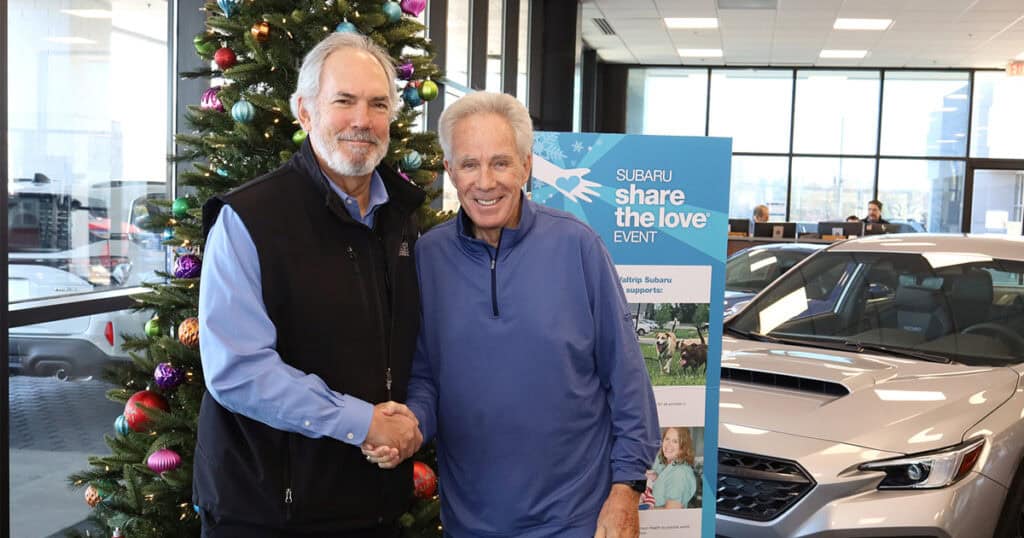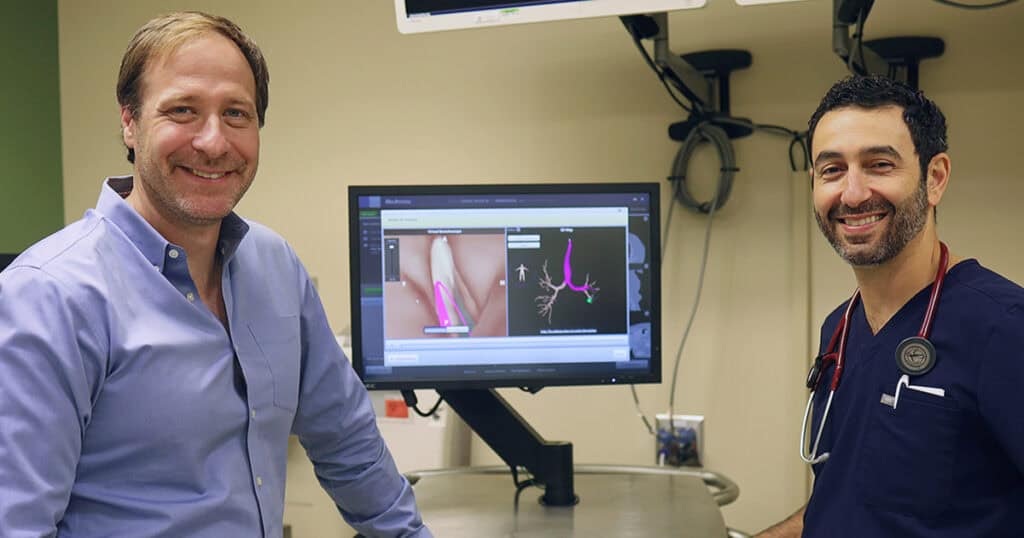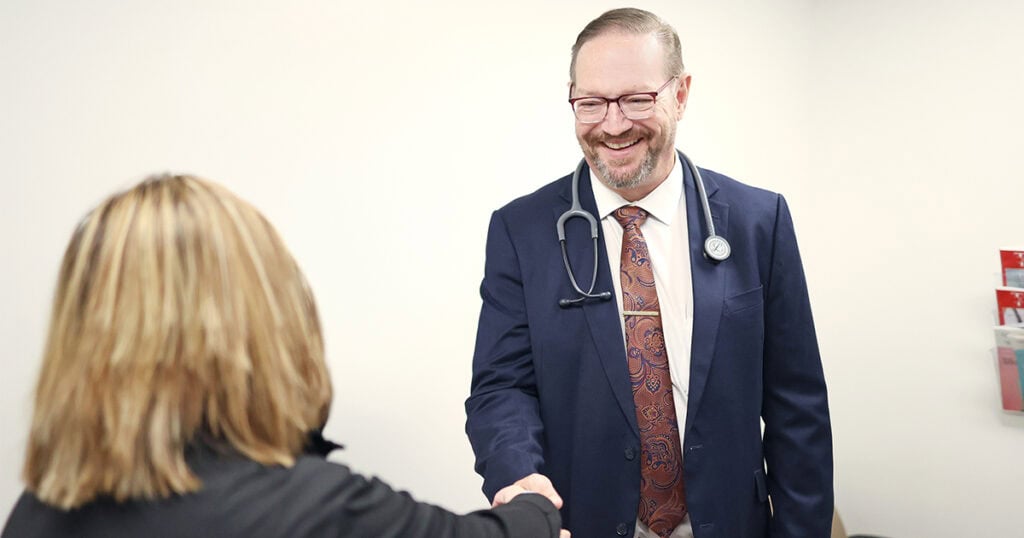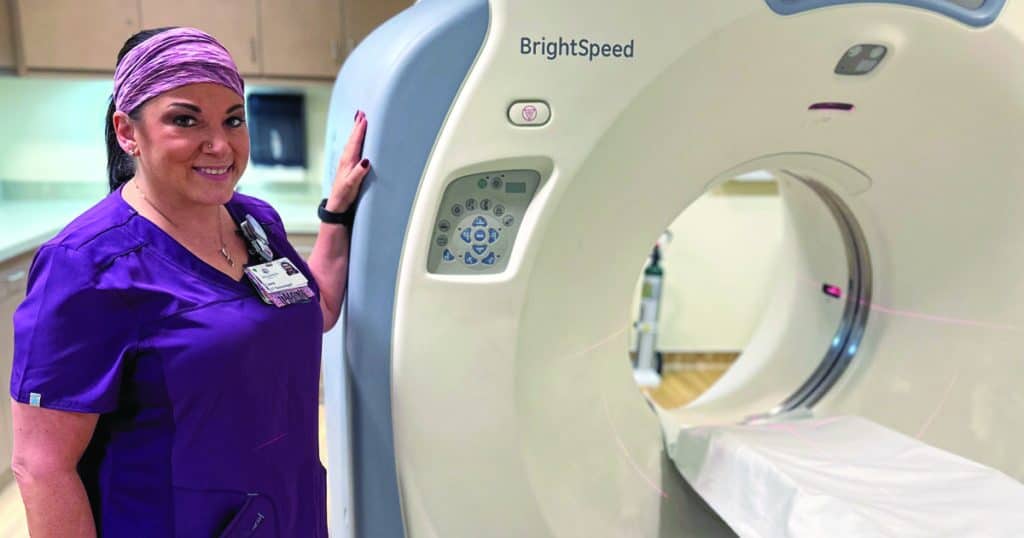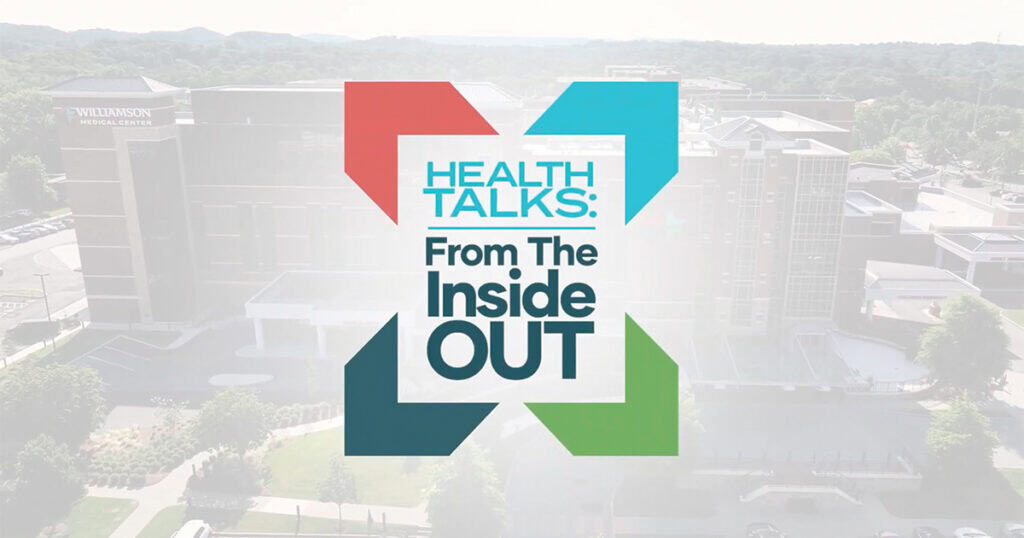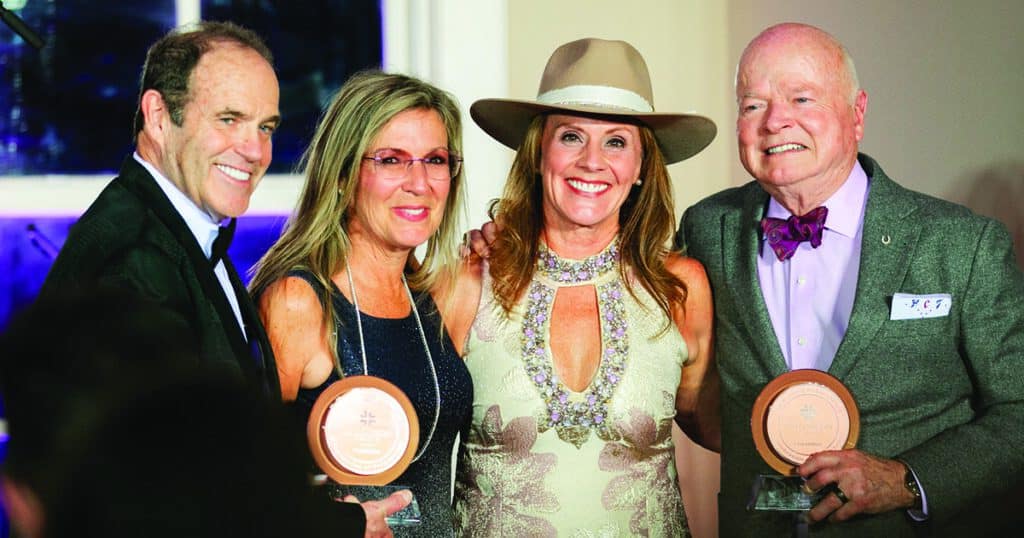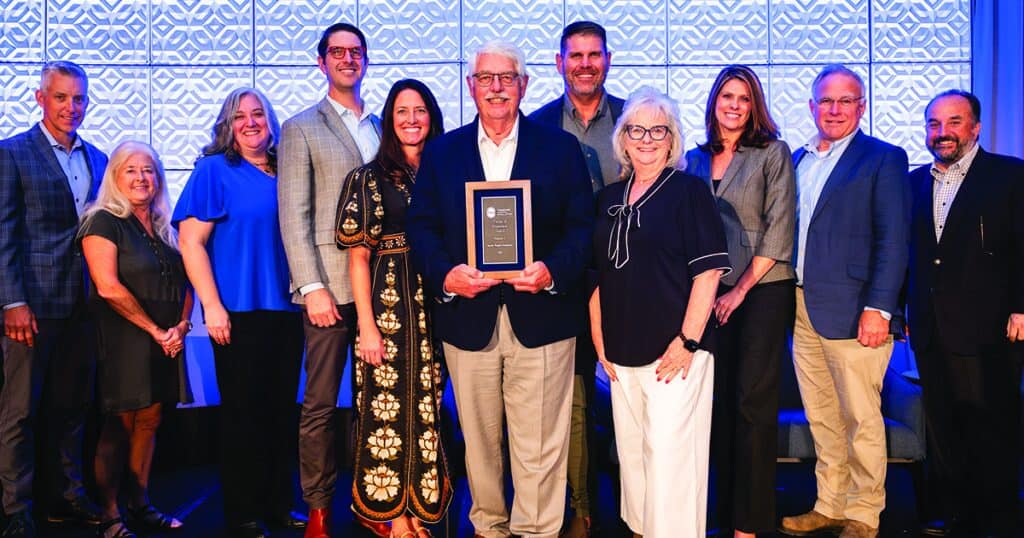Patients, Families Comforted by Williamson Health Volunteers
Published: December 19, 2023
Sometimes they just need to hold her hand.
Kay Pfeiffer remembers her first turn as a hospital volunteer many years ago. It was a role her mother made her take in a Chicago-area facility. Dressed in the iconic pink and white “candy striper” outfit, Kay helped to make patients more comfortable during their visit.
Today, Kay still wears the familiar pink. But no one insists she be at Williamson Medical Center; it’s happily her choice. She is proud to be seen in the calming and colorful shirts worn by Williamson Health volunteers and enjoys donating her evenings each week in the hospital’s emergency room to “fill the gap” for patients between check-in and discharge.
And sometimes the patients and family members just need to hold her hand – or wrap their arms around her and cry. Kay, a mom of three grown children and a long-time healthcare executive, has a wealth of life experiences that included frequent trips to ERs. She made those familiar visits with her school-age kids. Her mom suffered with a bad heart and died when Kay was young. Dad was confined to a wheelchair with his multiple sclerosis.
Every day here in the Williamson Medical Center ER brings a new opportunity to reassure an anxious parent, an elderly neighbor in agony and people who are scared. No one plans a trip to the ER. Kay recalls being far away from her dad when he was ill or not being able to help her own kids struggling with pain in the ER.
“What I can do now is pay it forward and make one person feel better,” she says. “However, I know this work has actually allowed me to do much more than that.”
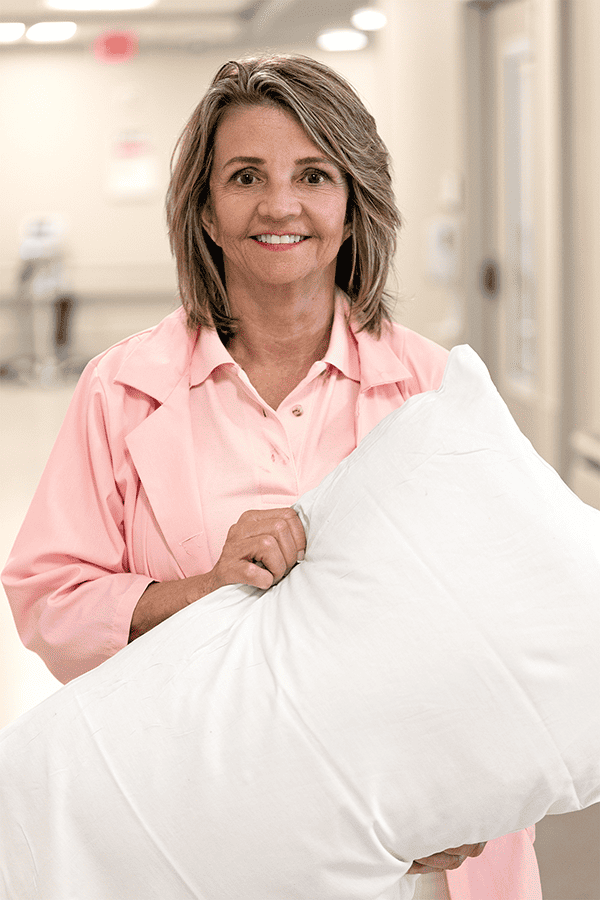
Kay usually volunteers two to three days each week, arriving around 4:30 p.m. and staying until 8:30 p.m., often answering a familiar question, “What’s taking so long?” She does her best to explain the wait: why one person who arrived after another may have gone first; the unseen ambulance arrivals; a patient who suddenly took a turn for the worse.
Kay says her instinctive skills ease the worry for almost everyone she encounters.
“A dad came in the other day with three young children and their mom was in back. The kids were going crazy,” Kay remembers. “So, I get coloring books and have the kids do a coloring contest. I give them a Popsicle. I’m doing things you might not think of unless you already had all that experience.”
There’s no time to “freak out” when something happens, she says. A sick woman needs a pillow. Someone else is nervous and asks Kay to simply sit next to her for a minute. An older man wants a blanket while another jokes if Kay can bring him a steak and baked potato. She quickly pivots, laughs, and says she’ll ask the doctor.
“I love it, I just love it,” she says, despite the overwhelming pace of the ER. “I try to do this as much as I can. Sometimes I’m here on the weekend until 10 at night because it gets really busy, and they need help.” Lately Kay has been training high school volunteers, encouraging the students to connect with the steady stream of patients as they would their own grandparents.
“If I can help an elderly patient who’s anxious, or a mom who has to wait for hours, then I’m doing a beautiful thing,” says Kay. “I know my dad would be proud.”
Patients, Families Comforted by Williamson Health Volunteers
Sometimes they just need to hold her hand.
Kay Pfeiffer remembers her first turn as a hospital volunteer many years ago. It was a role her mother made her take in a Chicago-area facility. Dressed in the iconic pink and white “candy striper” outfit, Kay helped to make patients more comfortable during their visit.
Today, Kay still wears the familiar pink. But no one insists she be at Williamson Medical Center; it’s happily her choice. She is proud to be seen in the calming and colorful shirts worn by Williamson Health volunteers and enjoys donating her evenings each week in the hospital’s emergency room to “fill the gap” for patients between check-in and discharge.
And sometimes the patients and family members just need to hold her hand – or wrap their arms around her and cry. Kay, a mom of three grown children and a long-time healthcare executive, has a wealth of life experiences that included frequent trips to ERs. She made those familiar visits with her school-age kids. Her mom suffered with a bad heart and died when Kay was young. Dad was confined to a wheelchair with his multiple sclerosis.
Every day here in the Williamson Medical Center ER brings a new opportunity to reassure an anxious parent, an elderly neighbor in agony and people who are scared. No one plans a trip to the ER. Kay recalls being far away from her dad when he was ill or not being able to help her own kids struggling with pain in the ER.
“What I can do now is pay it forward and make one person feel better,” she says. “However, I know this work has actually allowed me to do much more than that.”

Kay usually volunteers two to three days each week, arriving around 4:30 p.m. and staying until 8:30 p.m., often answering a familiar question, “What’s taking so long?” She does her best to explain the wait: why one person who arrived after another may have gone first; the unseen ambulance arrivals; a patient who suddenly took a turn for the worse.
Kay says her instinctive skills ease the worry for almost everyone she encounters.
“A dad came in the other day with three young children and their mom was in back. The kids were going crazy,” Kay remembers. “So, I get coloring books and have the kids do a coloring contest. I give them a Popsicle. I’m doing things you might not think of unless you already had all that experience.”
There’s no time to “freak out” when something happens, she says. A sick woman needs a pillow. Someone else is nervous and asks Kay to simply sit next to her for a minute. An older man wants a blanket while another jokes if Kay can bring him a steak and baked potato. She quickly pivots, laughs, and says she’ll ask the doctor.
“I love it, I just love it,” she says, despite the overwhelming pace of the ER. “I try to do this as much as I can. Sometimes I’m here on the weekend until 10 at night because it gets really busy, and they need help.” Lately Kay has been training high school volunteers, encouraging the students to connect with the steady stream of patients as they would their own grandparents.
“If I can help an elderly patient who’s anxious, or a mom who has to wait for hours, then I’m doing a beautiful thing,” says Kay. “I know my dad would be proud.”
Published: December 19, 2023
